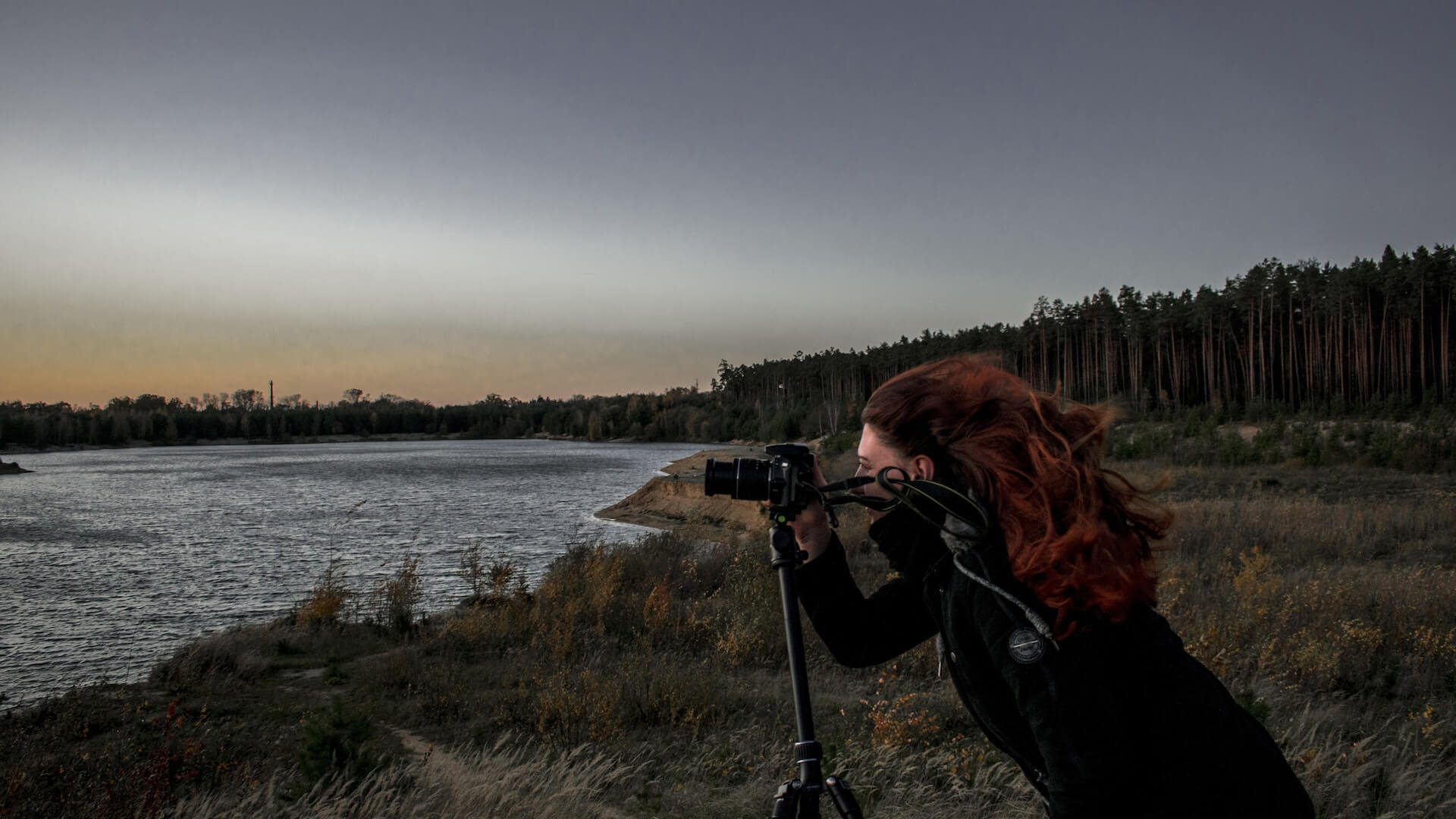Being a freelance photographer is a dream come true for many aspiring artists. The freedom to set your own hours, choose your clients, and work on projects that inspire you is something that many people crave. However, making a living as a freelance photographer is not as easy as it seems. It takes a lot of hard work, dedication, and creativity to turn your passion for photography into a successful career. In this blog post, we will explore the key steps you need to take to thrive as a freelance photographer. From building a portfolio and finding clients to setting your rates and managing your finances, we will cover everything you need to know to turn your passion into a profession. Whether you’re just starting out or you’re a seasoned pro, this guide will help you take your photography business to the next level.
Transitioning from passion to profession: Making the decision
Making the decision to transition from pursuing photography as a passion to turning it into a full-fledged profession is a significant step that requires careful consideration. While following your passion can be incredibly fulfilling, it is important to approach the transition with a well-thought-out plan.

First and foremost, it is crucial to evaluate your skills, experience, and portfolio. Take a critical look at your work and assess whether it is of a professional standard. Consider seeking feedback from trusted mentors or industry professionals to gain valuable insights and identify areas for improvement.
Next, it is essential to research the market and identify the demand for freelance photographers in your chosen niche. Explore the competition, analyze their portfolios, and assess what sets you apart. This research will enable you to position yourself uniquely and identify potential gaps or opportunities in the market.
Financial considerations play a vital role in this decision-making process as well. Evaluate your current financial situation and determine if you have the necessary resources to sustain yourself during the initial stages of your freelance career. It is advisable to have a financial cushion or backup plan in place to mitigate any potential risks or uncertainties.
Additionally, networking and building relationships within the industry are key components of a successful transition. Attend photography workshops, exhibitions, and industry events to connect with fellow professionals, potential clients, and mentors. Building a strong network will not only open up opportunities but also provide invaluable support and guidance throughout your journey.
Lastly, setting realistic goals and creating a strategic business plan is crucial for long-term success. Define your target audience, establish a pricing structure, and develop a marketing strategy to promote your services effectively. Remember to continuously refine and adapt your plan as you gain more experience and insight into the industry.
Building a solid portfolio: Showcasing your skills and style
Building a solid portfolio is crucial for any freelance photographer looking to thrive in the industry. Your portfolio serves as a visual representation of your skills, creativity, and unique style. It is essentially your calling card that potential clients will use to assess your capabilities and determine if you are the right fit for their needs.
When curating your portfolio, it is important to showcase a diverse range of work that highlights your versatility as a photographer. Include a variety of subjects, styles, and techniques to demonstrate your adaptability and ability to capture different types of moments. Whether it’s portraits, landscapes, events, or product photography, make sure each image reflects your artistic vision and technical expertise.
Consider organizing your portfolio in a cohesive and visually appealing manner. Create a narrative flow that tells a story and engages viewers. This can be achieved through thoughtful sequencing, using complementary color schemes, or incorporating visual elements that tie your photos together.
In addition to showcasing your best work, it can be beneficial to include testimonials or references from satisfied clients. This helps build trust and credibility, as potential clients can see that others have had positive experiences working with you.
Remember to regularly update your portfolio with your latest and strongest work. As you gain more experience and improve your skills, be selective and only include your best photographs. Quality over quantity is key when it comes to impressing potential clients.
Lastly, make your portfolio easily accessible by creating a professional website or utilizing online platforms specifically designed for photographers. Ensure that your website is user-friendly, visually appealing, and optimized for mobile devices. This way, clients can easily navigate through your work and get a sense of your style and capabilities.
Establishing your brand: Developing a unique identity
With so many talented photographers out there, it’s important to stand out from the crowd and make a lasting impression on your clients.

To develop a unique brand identity, start by defining what sets you apart from others in the field. Consider your style, approach, and the emotions you want to evoke through your photography. Are you drawn to vibrant and bold images or do you prefer a more minimalist and subtle aesthetic? Understanding your own artistic vision will help you create a consistent and recognizable brand.
Next, think about the visual elements that will represent your brand. This includes your logo, color palette, typography, and overall design aesthetic. These elements should align with your style and convey the essence of your work. For example, if you specialize in capturing nature’s beauty, you may choose earthy tones and organic shapes for your brand visuals.
Additionally, don’t forget about your brand voice. How do you want to communicate with your audience? Are you professional and polished or more laid-back and conversational? Defining your brand voice will help you establish a consistent tone across your website, social media, and client interactions.
Consistency is key when it comes to establishing your brand. Ensure that your brand elements are reflected consistently across all touchpoints, from your website and portfolio to your business cards and invoices. This will help create a cohesive and memorable experience for your clients, making it easier for them to recognize and remember your work.
Remember, developing a unique brand identity takes time and experimentation. Don’t be afraid to iterate and refine your brand as you grow as a photographer. Your brand should evolve alongside your skills and interests, reflecting your journey in the industry.
Setting up your business: Legal considerations and financial management
When transitioning from a passionate hobbyist to a professional freelance photographer, it is crucial to set up your business properly to ensure legal compliance and effective financial management. While the creative aspect of photography may be your main focus, neglecting the business side can hinder your growth and success.
First and foremost, consider the legal aspects of your freelance photography business. Registering your business as a sole proprietorship or limited liability company (LLC) provides legal protection and separates your personal and business assets. Consult with a legal professional or research local regulations to understand the specific requirements and paperwork needed in your area.
Next, establish a solid financial foundation for your business. This includes opening a dedicated business bank account to keep your personal and business finances separate. Maintaining accurate records of your income, expenses, and taxes is essential for smooth financial management. Consider using accounting software or hiring an accountant to help you stay organized and make informed financial decisions.
Additionally, it is vital to understand and comply with tax obligations as a freelance photographer. Research the tax laws and regulations applicable to your business, and keep track of deductible expenses such as equipment, travel, and marketing costs. Consult with a tax professional to ensure you are maximizing deductions and meeting all tax obligations.
Insurance is another aspect to consider when setting up your freelance photography business. Protecting yourself and your equipment with liability insurance and equipment insurance provides peace of mind and safeguards against unforeseen circumstances.
Lastly, creating clear and professional contracts is crucial when working with clients. Define the scope of work, payment terms, usage rights, and any other relevant details to avoid misunderstandings or disputes. Consult with a legal professional to ensure your contracts are comprehensive and protect your rights as a photographer.
Finding clients: Marketing and networking strategies
While your skills and creativity may be top-notch, without clients, your passion may remain a hobby rather than a profession. To turn your passion into a thriving career, you need to implement effective marketing and networking strategies.

One of the most important marketing tools for freelance photographers is a compelling portfolio. Showcase your best work, highlighting your unique style and expertise. A visually appealing and user-friendly website can serve as a virtual portfolio, allowing potential clients to easily browse through your work and get a sense of your artistic vision.
Social media platforms such as Instagram, Facebook, and Pinterest can also be powerful tools for marketing yourself as a freelance photographer. Regularly share your work, engage with your audience, and use relevant hashtags to increase your visibility. Collaborating with influencers or participating in photography challenges can also help you expand your reach and attract potential clients.
Networking is equally important in the freelance photography industry. Attend industry events, workshops, and exhibitions to connect with fellow photographers, potential clients, and industry professionals. Building relationships and establishing a strong network can lead to referrals and collaborations, opening up new opportunities for your freelance career.
In addition to traditional networking, leveraging online platforms and communities can also be beneficial. Join photography forums, online communities, and professional organizations where you can network with like-minded individuals and gain valuable insights from experienced photographers. Participate in online photography contests or contribute to photography blogs and publications to increase your visibility within the industry.
Pricing your services: Determining your worth and negotiating rates
Determining your worth and negotiating rates can sometimes be challenging, but it is essential for your success in this industry.
First and foremost, it is important to assess your skills, experience, and the quality of your work. Take into consideration factors such as your level of expertise, the uniqueness of your style, and the demand for your services. These factors play a significant role in determining your value as a photographer.
Researching the market and understanding the industry standards is also crucial. Take a look at what other photographers with similar skills and experience are charging for their services. This will give you a better understanding of the current rates and help you position yourself competitively.
Remember, pricing your services too low can undervalue your work and make it difficult to sustain yourself financially. On the other hand, pricing too high may deter potential clients. Striking the right balance between being competitive and reflecting your worth is key.
When negotiating rates with clients, it is important to be confident and assertive. Clearly communicate the value you bring to the table and explain why your rates are justified. Showcase your portfolio and highlight your unique selling points to demonstrate why clients should invest in your services.
Be open to negotiation, but also have a clear bottom line in mind. Consider offering different packages or add-ons to cater to varying budgets and needs. This flexibility can help you attract a wider range of clients while still maintaining your desired income.
Lastly, don’t be afraid to revisit your pricing strategy periodically. As you gain more experience and expand your portfolio, you may need to adjust your rates accordingly. Continuously evaluate your pricing structure to ensure it aligns with your skills, market demand, and financial goals.
Balancing artistry and client expectations: Nurturing creativity while meeting client needs
As a freelance photographer, one of the biggest challenges you may face is maintaining a delicate balance between your artistic vision and meeting the expectations of your clients. While your creativity and unique style are what set you apart in this competitive industry, it’s crucial to remember that ultimately, your clients are the ones who will be using your photographs for their own purposes.

Nurturing your creativity while meeting client needs requires effective communication and a deep understanding of their requirements. Start by having open discussions with your clients to gain insights into their vision and objectives. Listen attentively to their ideas and expectations, and make sure to clarify any doubts or concerns you may have.
Incorporating your artistic flair into client projects involves finding innovative ways to interpret their briefs while staying true to your style. Experiment with different angles, lighting techniques, or post-processing methods that align with your artistic vision, while still delivering the desired outcome for your clients. Remember, your unique perspective and creativity are what attracted clients to you in the first place, so don’t be afraid to showcase your skills and offer suggestions that can enhance their projects.
Additionally, it’s essential to manage expectations from the outset. Be transparent about what you can deliver within the given timeframe and budget, and communicate any limitations or potential challenges that may arise. Setting realistic expectations will help you avoid misunderstandings and ensure a smoother working relationship with your clients.
Finding the balance between artistry and client expectations also involves being adaptable and flexible. While it’s important to stay true to your creative instincts, be willing to make adjustments and accommodate client preferences when necessary. Collaboration and compromise can lead to remarkable results that satisfy both parties.
Managing a flexible schedule: Tips for staying organized and productive
Managing a flexible schedule as a freelance photographer can be both a blessing and a challenge. On one hand, you have the freedom to work when and where you want, allowing you to pursue your passion on your own terms. On the other hand, without a structured 9-to-5 routine, it’s easy to fall into the trap of procrastination and disorganization.
To stay organized and productive, it’s crucial to establish a system that works for you. Start by creating a daily or weekly schedule that outlines your priorities and tasks. This will help you allocate time for client shoots, editing, marketing, and other essential aspects of your business.
Utilize digital tools and apps to your advantage. There are numerous project management and productivity apps available that can help you stay on top of deadlines, track your time, and manage your workflow. Find the ones that align with your needs and integrate them into your routine.
Set realistic goals and deadlines for yourself. Break down large projects into smaller, manageable tasks and set specific deadlines for each. This will not only help you stay focused but also give you a sense of accomplishment as you tick off completed tasks.
Create a dedicated workspace that is conducive to your productivity. Whether it’s a home office, a co-working space, or a coffee shop, find a space where you can concentrate and get into a work mindset. Minimize distractions and establish boundaries with friends, family, and yourself to ensure uninterrupted work time.
Don’t forget to take breaks and practice self-care. Freelancers often have the tendency to overwork themselves, leading to burnout. Incorporate regular breaks into your schedule to recharge and avoid exhaustion. Additionally, make time for activities outside of work that bring you joy and inspiration. Remember, a balanced and fulfilled freelancer is a more productive one.
Thriving as a freelance photographer: Embracing challenges and finding fulfillment
Thriving as a freelance photographer is not without its challenges, but embracing these challenges can lead to immense fulfillment in your profession. As a freelancer, you have the freedom to choose the projects you take on, the clients you work with, and the creative direction you want to explore. However, this also means that you are solely responsible for finding clients, marketing your services, and managing your finances.

One of the key challenges that freelance photographers face is the constant need to hustle for new clients. It requires proactive networking, showcasing your portfolio, and consistently putting yourself out there to attract potential clients. This can be daunting, especially in a competitive industry, but it also presents opportunities for growth and building a strong reputation.
Another challenge is the need to balance creativity with business acumen. As a freelance photographer, you not only have to master your craft but also understand the business side of things. This includes pricing your services appropriately, negotiating contracts, managing client expectations, and delivering projects on time. It may require learning new skills such as marketing, accounting, and client management, but it is an essential part of thriving as a freelance photographer.
Despite these challenges, finding fulfillment as a freelance photographer is incredibly rewarding. You have the chance to bring your artistic vision to life, capture meaningful moments, and create a lasting impact through your work. You have the freedom to pursue projects that align with your passion and values, allowing you to create a unique and authentic brand.
Moreover, freelancing allows for a flexible lifestyle, where you can choose your own schedule and work on projects that excite you. This freedom to shape your career according to your own vision can lead to a sense of fulfillment that is hard to find in more traditional employment settings.
Conclusion
Transitioning from pursuing photography as a passion to making it a profession can be a challenging yet rewarding journey. By following the tips and advice we shared in this article, you can navigate the freelance photography world with confidence and achieve success. Remember to stay true to your artistic vision, continuously improve your skills, and embrace the business side of freelancing. Keep capturing those beautiful moments and turning your passion into a thriving profession!



